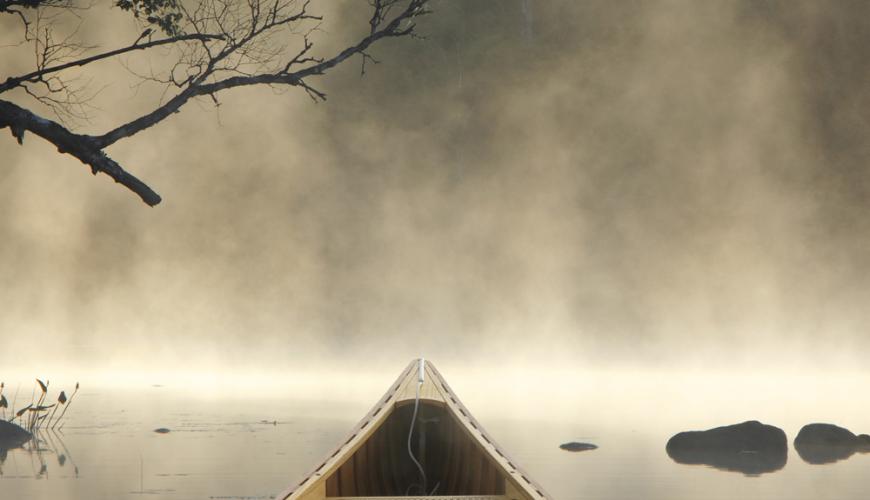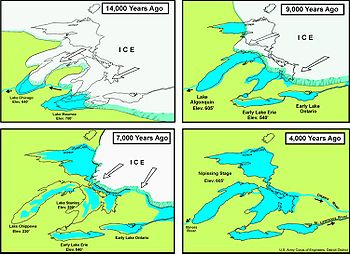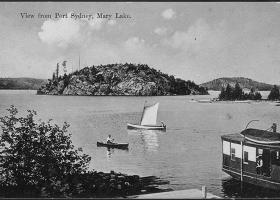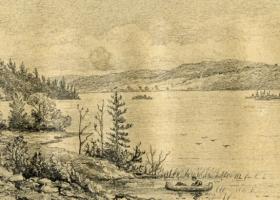Birth of the Muskoka River

Glaciation transformed the Muskoka River into a giant staircase - a series of basins stepping down the side of the Algonquin Dome. Waterfalls and rapids make up the vertical portions. Basins not occupied by lakes are filled with loose material deposited mainly by glacial meltwaters; nearly level stream channels cross these.
The above image and below information is from the book "This River The Muskoka" by Gary Long of Huntsville
The Muskoka River as we know it today is very different than it did just a few thousand years ago. Indeed, 12, 000 years ago the river did not even exist. About one million years ago the climate began to cool and the Ice Age began, setting in motion the process that would lead to the birth of the modern Muskoka River, just a little over 11 000 years ago.

Four times in the last million years Glacial Lakes 14 000 years agogreat glaciers as much as 3km thick crept across most of Canada and into the US. Twelve thousand years ago, as the weather warmed, and the glaciers melted northward the Muskoka watershed was slowly uncovered. Initially a glacial lake named the Algonquin Lake formed, which briefly inundated the entire western half of the Muskoka Watershed.
These meltwaters deposited billions of tones of gravel, sand, silt, salt and clay that built up localized plains, clogged many valleys and extended deltas. However this was only a thin veneer of drift covering the rock beneath. The centuries immediately after the retreat of the ice and subsequent recession of the Lake Algonquin waters was the time during which the Muskoka River system evolved most rapidly towards its present form. The thick glacial meltwater deposits that had accumulated in the bedrock valleys fell easy prey to erosion as normal creeks and rivers began to develop.
The bedrock under the watershed controls not just the direction but also the descent of the Muskoka River. The initial period of rapid erosion into the loose glacial meltwater deposits came to an abrupt end when the streams and rivers encountered that very hard billion-year gneiss. Rivers never stop evolving, given enough time the Muskoka River will eliminate the irregularities in its channels where waterfalls now tumble.












